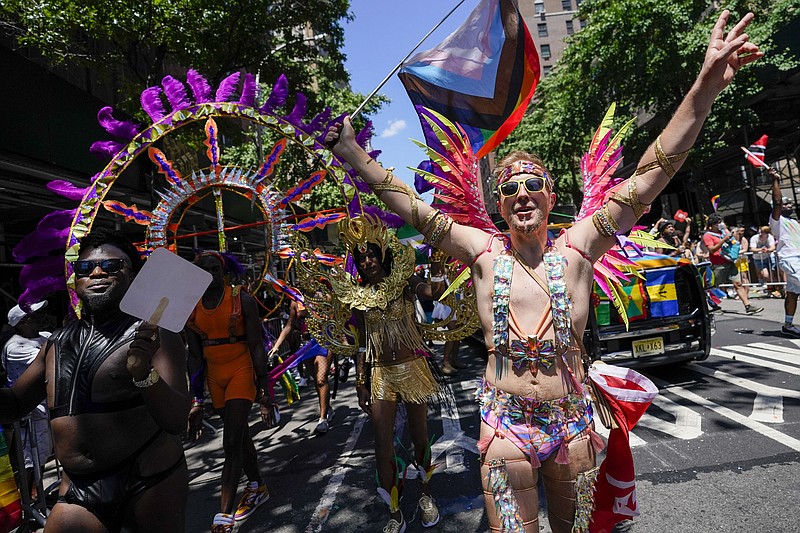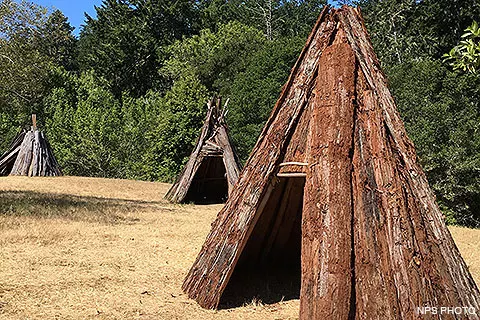Cultures proliferate. But as Roger Scruton reminded us, the thing called civilization is something altogether different. It is a commanding inheritance—a dynamic, comprehensive order that defends against dissolution into bedlam. The peril of our historical moment lies in the denigration of civilization by a multiplicity of parochial cultures. From feminism, gay culture, LBGTQ+ Nation (with its own flag), and transgenderism, to aggressive assertions of racial and ethnic primacy, we are re-tribalizing. Passion for multiculturalism is little more than an inversion of the barbarian’s jealous hatred for civilization.
Vandalization of statues of Junipero Serra is a useful instance of the denunciation and belittlement of civilization. Significantly broader and deeper than anti-Catholic bigotry, the iconoclasm is anti-Western.


So stay awhile with the Coast Miwok of Marin County.
California’s indigenous activists are in an anthropological huff. Intent on toppling statues deemed objectionable to revisionist interpretations of history, they have knocked several effigies of Junipero Serra—Franciscan priest and “Apostle of California“—off their plinths. Other historic figures have suffered the same ignominy. The Miwok are not short of fellow travelers. In June 2020, a monument to Francis Scott Key, author of the National Anthem, was vandalized in San Francisco’s Golden Gate Park together with another of Fr. Serra. Also in solidarity with George Floyd protests, a bronze of Junipero was toppled in Los Angeles’ Father Serra Park. Ulysses S. Grant met the same fate. So did a commemorative grouping of Miguel de Cervantes with the fictional Don Quixote and Sancho Panza. [Why? Possibly because Cervantes joined the Third Order of St. Francis late in life, thus aligning him with the Franciscan missionaries? Only a guess.]
Narrowing the animus of Native American vandals to anti-Catholicism per se—as Archbishop Cordileone has claimed—obscures the darker, more spiteful heart of things.

The Damnation of Memory
Pulling down or defacing memorial statues is a flight from memory—what the Romans termed damnatio memoriae. Jean-François Manicom, distinguished curator of Transatlantic Slavery and Legacies at the International Slavery Museum, Liverpool, clarifies why history must be acknowledged, not obliterated. However painful, the past remains to be understood. For civilization to endure, the past must not be frozen in a one-eyed narrative blind to the longue durée of historical time and its daunting fullness:
Memory, when damned, ends up rotten. It contaminates the body that expelled it. Its banishment allows for human denial and historical falsehoods.
That brings us to Coast Miwok insurrectionists who indict Fr. Serra for cultural genocide and abuse of Native Americans. In high retrospective dudgeon, tribal members assaulted his statue at Mission San Raphael this past October [See Archbishop Cordileone: Dancing with Restorative Justice.] It was not the first such gambit and likely will not be the last.
Romantic Primitivism: Fantasies of Urbanites
Today’s Coast Miwok are modern consumers of media-induced romantic primitivism. What they know of ancestral tribal life is a grab-bag of cultural inventions derived from academia’s anti-Western quest for ideal pre-Columbian—and pre-capitalist—cultures. Western lecture halls are the breeding ground for an ahistorical sentimentalism that owes more to Rousseau, and his German counterpart Johann Gottfried Herder, than to the realities of Late Neolithic subsistence living. Following the logic of ethnic mythologizers, the Miwok’s idealized ancestors were spiritually and environmentally superior to the the European civilization embodied by Junipero Serra. Fables of innocence past feature in the chronicle of white man’s ruinous ways.
The Miwok: Icons of Sustainable Living
Our National Park Service serenades the ancestry and ecological sanctity of Coast Miwok on its website. A paean to the idyllic lifestyle of hunter-gatherers, it is worth reading in full. As you go, note the absence of any reference to civic structures, to rule of law, to endemic disease, child and/or adult mortality, religious practices, means of settling disputes, inter-tribal warfare, artistic production, toilet practices. All the mundane and brutal facts of life go missing.

The Park Service warbles that “the Coast Miwok people continue to teach us much”:
Before the Europeans came to California, the Coast Miwok people . . . knew and blended with this bountiful land for thousands of years, developing a rich economy based on gathering, fishing and hunting. Village communities . . . developed in sheltered places near fresh water and plentiful food.
Coast Miwok life was intricately woven into the changing seasons. In the late spring . . . . Fire-hardened digging sticks were used by the women to reach deep-set roots and bulbs. The ocean provided kelp in large amounts, some to be eaten fresh, the rest dried and stored for the winter. . . . The summer sun ripened grasses and flower seeds, gathered by hitting the ripened seed with a beater basket and letting them fall directly into a collecting basket.
Fall was the season for collecting a variety of nuts: acorns (stored in a granary for year-round consumption), buckeye, hazel and bay. . . . Gray willow for baskets and traps was abundant. Winter and early spring were times of shortage when stored acorns, seeds and kelp became important food sources.
The ocean provided food year-round. Crab, clams, mussels, abalone, limpets and oysters were some of the seafood gathered by the women in the tidal zones. . . . Abalone shells were made into beautiful ornaments. . . . Strings of these beads were the main trade item (money) and were used extensively through Northern California.
The men adopted many different techniques for fishing. Dip nets . . . were used to scoop up fish, and woven surf nets were used along the open beaches. Cone-shaped traps of woven gray willow were set up in creeks and mouths of rivers. With hook and bait one could successfully catch halibut and rockfish year-round.
Hunting by use of traps and bow and arrow supplied the Coast Miwok with meat, fur and tools. . . . Antler tips were used for shaping arrowheads, sinew (muscle tendon) was used to fasten points to arrow shafts and leg bones were made into awls (needles used in basketmaking) and hair pins. In this way, the Coast Miwok wasted little of the animals they hunted.
Can you imagine a modern Miwok lass giving up Grub Hub, a refrigerator, and stocked shelves at a nearby grocery store, for fire-hardened digging sticks ? Or for the effort of scavenging clams in tidal zones? Neither can I.
What Popular Cultural Studies Leaves Out
How was fire kept going in indigenous villages? What happened if it went out? Did the Miwok relieve themselves outside their own dwelling in the manner of many tribal peoples? Did they engage in tribal warfare? Did they practice slavery as was common among native tribes? Were Miwok themselves subject to capture and enslavement by other tribes? What were their customs regarding childbirth, especially in times of famine—those early spring “shortages”? Were ritual restrictions placed on menstruating women? How did Miwok mourn? Or worship? What marriage practices existed? Were marriages polygamous? Polyandrous? Could men exchange or share wives?
In short, which aspects of aboriginal Miwok culture, untouched by European contact, warrant celebration and preservation? If the Park Service knows, it does not tell. Instead, it directs readers to the Miwok Archeological Preserve which offers California Indian skills classes at Kule Loklo, the would-be replica of a never-existant village.
Anthropologist Roger Sandall described the mentality twenty years ago in The Culture Cult, a revealing, unsentimental critique of what he called “designer tribalism:”
All knowledge of what was stagnant, miserable, cruel, and absurd about the old [tribal] way of life is suppressed. Replacing it is a genteel, upside down version of the past—a vision of native tradition which is domesticated and innocuous.
That vision of primordial wisdom and cultural harmony in aboriginal societies is a persistent myth. Distinguished contributors to the history of ideas, Arthur Lovejoy and George Boas identified the myth as “the discontent of the civilized with civilization.” Their famous text Primitivism and Related Ideas in Antiquity (1965) pointed out that the Scythians were to the classical Greeks what North American Indians have become to modern minds: fonts of virtues long drained from developed, urban societies.
As the romance goes, modernity—its rationality, industrialization, material progress—is the story of Paradise Lost. But myths take hostages. And consequences can be harrowing.


